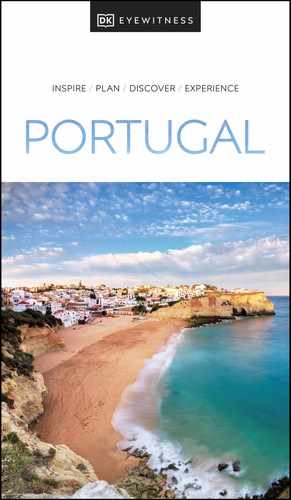ALENTEJO

t Festival decorations in the streets of Campo Maior
Experience Alentejo
Stone circles, dolmens and other relics of Stone Age life pepper the Alentejan plain, particularly around Évora, a historic gem of a city at the region’s geographical centre. Évora, like Beja, Elvas and Alter do Chão, was founded by the Romans, who valued this land beyond the Tagus – além Tejo – for its wheatfields. Introducing irrigation systems to overcome the soil’s aridity, they established enormous farms to grow grain for the Empire. Worked by peasant farmers, these huge estates, or latifúndios, still exist.
Vineyards across the region have long produced powerful wines, and some areas are classified at the Denominação de Origem Controlada (DOC) level. Since 1986, Portugal’s membership of the European Union has increased the rate of investment and modernization in the region, although it is still sparsely populated, supporting only 10 per cent of the population. Land tenure has always been a concern here, and Communism has a strong appeal – the Alentejans were solid supporters of the 1974 revolution. Portuguese people from other regions mock the amiable alentejanos for their traditional ways, but they are widely admired for their singing, handicrafts, gastronomy and wines.
